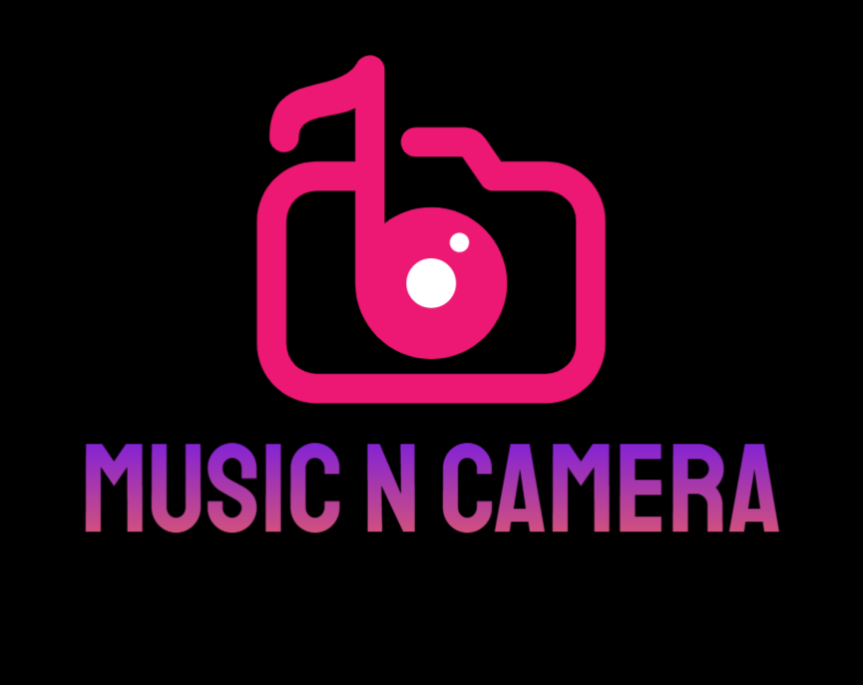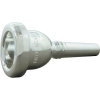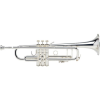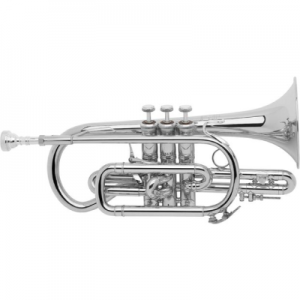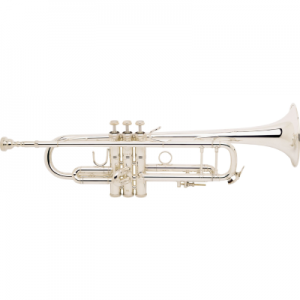Description
- Model No. – Depth of Cup – Approx. Cup Dia. – Rim Shape – Description
- 1*: Deep – 17.50 mm – Medium thin – Extra-large cup for players with a robust embouchure. Produces a great volume of tone.
- 1X: Deep – 17.00 mm – Medium wide – The pre-1970 (old style) No. 1, with slightly smaller cup and wider rim than the present model.
- 1B: Medium deep – 17.00 mm – Medium wide – Large cup for players with a robust embouchure. Produces a warm tone with great volume.
- 1C*: Medium – 17.00 mm – Medium wide – Large diameter, medium cup ” good for all-around use.
- 1CW: Medium – 17.00 mm – Slightly wider, gradually lowered to outside. – Same as No.1C with wider cushion rim.
- 1D: Medium shallow – 17.00 mm – Medium wide – Medium shallow cup facilitates high register. Brilliant sound.
- 1E: Shallow – 17.00 mm – Medium wide – Facilitates high register. Excellent mouthpiece for soprano or piccolo trumpet.
- 1-1/4C: Medium – 17.00 mm – Medium wide – Large cup for powerful trumpeters. Compact tone of great carrying power.
- 1-1/2B: Medium deep – 17.00 mm – Medium wide, not too sharp. – Produces a scintillating, warm tone of large volume. For players with a well-trained embouchure. Comfortable rim contour.
- 1-1/2C*: Medium – 17.00 mm – Medium wide, not too sharp. – Large diameter, medium cup ” good for all-around use.
- 2: Deep – 16.50 mm – Medium wide, lowered toward the outside. – Large cup; powerful Teutonic quality of tone. For players with a good embouchure.
- 2C: Medium – 16.50 mm – Medium wide, lowered toward the outside. – Large cup; powerful, brilliant tone. For players with a good embouchure.
- 2-1/2C: Medium – 16.40 mm – Medium wide, lowered toward the outside. – Large cup; brilliant, heroic, crisp C trumpet tone. For players with strong, muscular lips.
- 2-3/4C: Medium – 16.40 mm – Slightly more narrow than No.2-1/2C. – Large cup; bright, lively C trumpet tone. For players with a normal embouchure.
- 3: Deep – 16.30 mm – Medium wide – Fairly large cup with full, rich tone.
- 3B: Medium deep – 16.30 mm – Medium wide – A fairly large cup. The tone is warm and full.
- 3C*: Medium – 16.30 mm – Medium wide – Fairly large cup, good for all-around use.
- 3CW: Medium – 16.30 mm – Slightly wider, lowered to outside. – Same as No.3C with wider cushion style rim.
- 3D: Medium shallow – 16.30 mm – Medium wide – Fairly large, medium shallow cup produces a more brilliant tone. Facilitates high register.
- 3E: Shallow – 16.30 mm – Medium wide – Preferred by players who want a large mouthpiece but with a shallow cup. Facilitates high register.
- 3F: Extra shallow – 16.30 mm – Medium wide – Same as above but with extra shallow cup. Produces sparkling tone in the extreme high register.
- 5A*: Very deep – 16.25 mm – Medium wide, rounded inside edge. – A fairly large cup with a dark, full, mellow tone.
- 5B*: Medium deep – 16.25 mm – Medium wide, lowered toward the outside. Medium sharp edge. – A precise rim and a fairly large cup. The tone is vivid and full.
- 5V: Very deep – 16.25 mm – Medium wide, lowered toward the outside. Medium sharp edge. – V style cup with larger #20 throat and #25 backbore. Free blowing, very flexible.
- 5MV: Medium deep – 16.25 mm – Medium wide, lowered toward the outside. Medium sharp edge. – Medium deep V style cup with #25 throat and #25 backbore. Good commercial sound.
- 5SV: Shallow – 16.25 mm – Medium wide, lowered toward the outside. Medium sharp edge. – Shallow V style cup with #25 throat and #25 backbore.
- 5C*: Medium – 16.25 mm – Medium wide, well rounded toward the inside and outside, fairly flat. – For players with a strong embouchure who do not like a sharp edge. The tone is lively and rich.
- 6: Deep – 16.20 mm – Medium wide, not too sharp. – Produces a rich, clear tone of substantial body. Its rim shape was preferred by Vincent Bach. (Cornet model comes with #24 backbore as standard.)
- 6B: Medium deep – 16.20 mm – Medium wide, not too sharp. – Produces a beautiful, ringing tone and responds easily. Medium-large size gives the lips sufficient room to execute freely.
- 6BM: Medium deep – 16.20 mm – Medium wide, not too sharp. – Same as No.6B but larger #26 throat, #24 backbore. Large symphony sound.
- 6C*: Medium – 16.20 mm – Medium wide, not too sharp, rather flat. – A distinctive C trumpet cup. Its clear tone cuts through the largest bands and orchestras.
- 7*: Deep – 16.20 mm – Medium wide, lowered toward the outside. Med. sharp inside edge. – This popular model produces a colorful, liquid tone which is uniform over the entire scale. Desirable for all-around work.
- 7A*: Very deep – 16.20 mm – Medium wide, lowered toward the outside. Med. sharp inside edge. –
- Warm, melodious, rich tone approaches the quality of a lyric soprano voice. Free blowing.
- 7B: Medium deep – 16.20 mm – Medium wide, lowered toward the outside. Med. sharp inside edge. – Slightly livelier timbre than No. 7, full in the low and middle registers, responds easily on high tones. Warm, rich sound.Well suited for all-around use.
- 7BW: Medium deep – 16.20 mm – Slightly wider, lowered toward the outside. Med. Sharp inside edge. – The same features as No. 7B with a cushion rim for players with slightly heavier lips.
- 7C*: Medium – 16.20 mm – Medium wide, lowered toward the outside. Med. sharp inside edge. Well-rounded edge with a perfect grip. – Probably the most widely used model in the world. Its brilliant tone is preferred by school musicians and by artists.
- 7CW: Medium – 16.20 mm – Slightly wider, lowered toward the outside. – The same as No. 7C with a comfortable cushion rim contour. Very practical for strenuous work and players with large lips.
- 7D: Medium shallow – 16.20 mm – Medium wide, lowered toward the outside. Similar to No. 7C. – A shallower cup than No. 7C, designed principally for D trumpet, but used successfully where great brilliance and easy high register are required.
- 7DW: Medium shallow – 16.20 mm – Slightly wider than No. 7D. – This shallow E soprano trumpet (or cornet) cup is excellent for D trumpet and for playing continually in the high register. Cushion rim is helpful to players who use a little too much pressure.
- 7E: Shallow – 16.20 mm – Slightly wider than No. 7C. – This extra shallow E soprano trumpet (or cornet) cup produces crisp, sparkling tone in the extreme high register. Widely used for piccolo trumpet.
- 7EW: Shallow – 16.20 mm – Slightly wider than No. 7E. – The same as No. 7E with a cushion rim. For players accustomed to playing with much pressure, especially in the high register.
- 8: Deep – 16.20 mm – Fairly wide with slightly flatter surface than No.7. Rounded inner edge. – The same cup as No. 7 but with a rim that players with protruding teeth find more comfortable.
- 8B: Medium deep – 16.20 mm – Fairly wide with slightly flatter surface than No.7B. Rounded inner edge. – The same cup as No. 7B with a rim that players with protruding teeth find more comfortable. Darker sound than No. 8.
- 8C: Medium – 16.20 mm – Fairly wide with slightly flatter surface than No.7C. Rounded inner edge. – The same cup as No. 7C but with a rim that players with protruding teeth find more comfortable.
- 8-1/2: Deep – 16.10 mm – Medium wide, lowered toward the outside. Med. sharp inside edge. – Slightly smaller in diameter than No. 7; produces a full, round tone. Preferred by players with a sensitive embouchure and by those whose work is very strenuous.
- 8-1/2A: Very deep – 16.10 mm – Medium wide with rounded inner edge. – Produces a full, velvety tone. Suitable for cantilena playing.
- 8-1/2B: Medium deep – 16.10 mm – Medium wide, lowered toward the outside. Medium sharp edge. – Like No. 7B but with a cup diameter just enough smaller to facilitate production of the high tones.
- 8-1/2C: Medium – 16.10 mm – Medium wide, well rounded. – Medium C cup provides flexibility and easy response. Clear, brilliant tone throughout the register.
- 8-3/4: Deep – 16.10 mm – Medium wide, not too sharp. – Produces a tone of great volume and Teutonic character. Very effective in symphonic work and opera.
- 8-3/4C: Medium – 16.10 mm – Medium wide, slightly flat.
- *Bach fluegelhorn mouthpieces are regularly stocked in those model numbers marked with an asterisk in the chart (all other standard Bach trumpet rim sizes are available on special order). They have identical rims, but deeper, fluegelhorn-style cups, a larger throat and backbore. The deeper cups produce a dark tone of lyric quality. Their fundamental component is intense; the upper partials are reduced to a minimum. Do not attempt to play fluegelhorn with a refitted cornet or trumpet mouthpiece as you will be more likely to play out of tune and not get the rich sound characteristic of the fluegelhorn.
